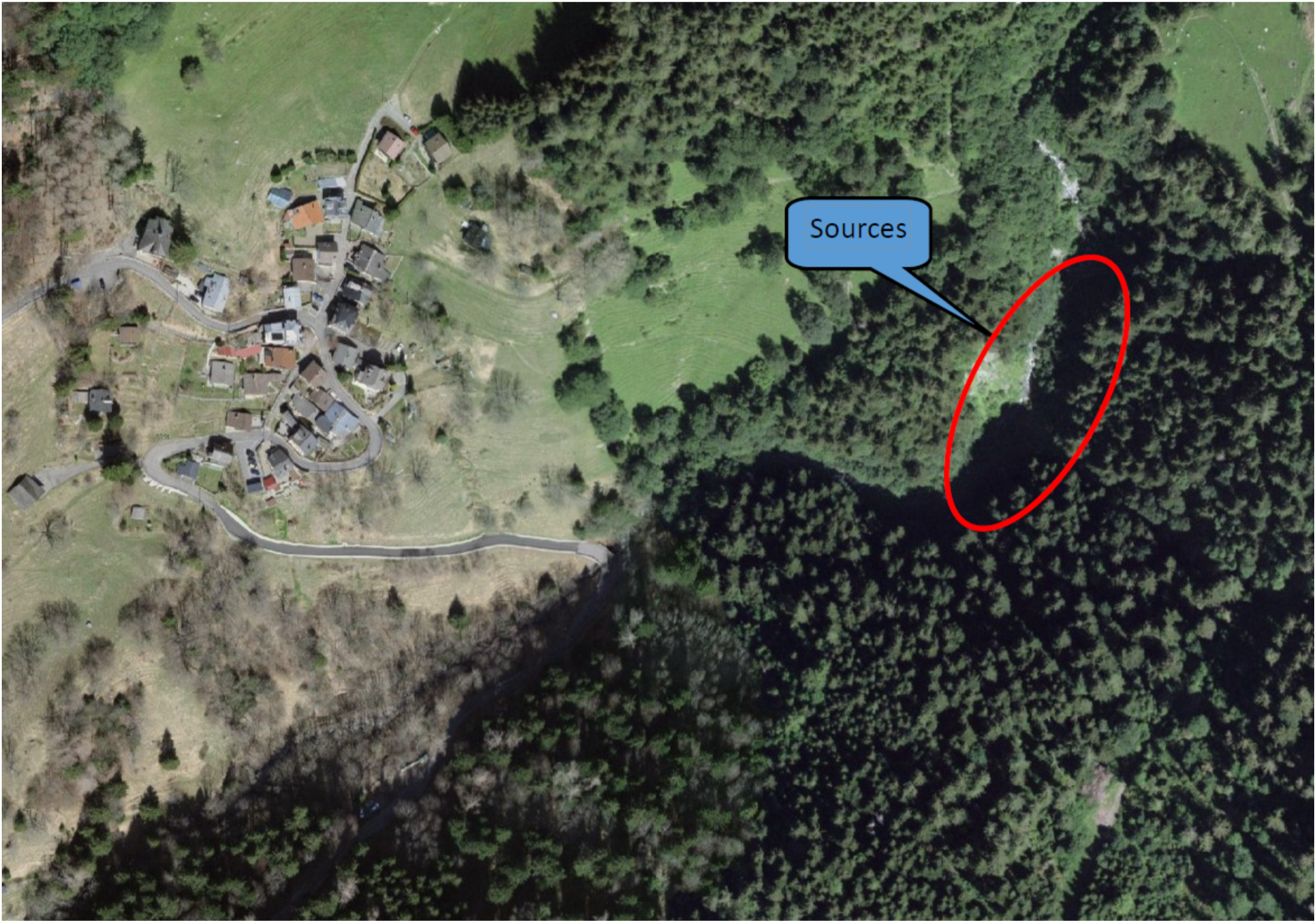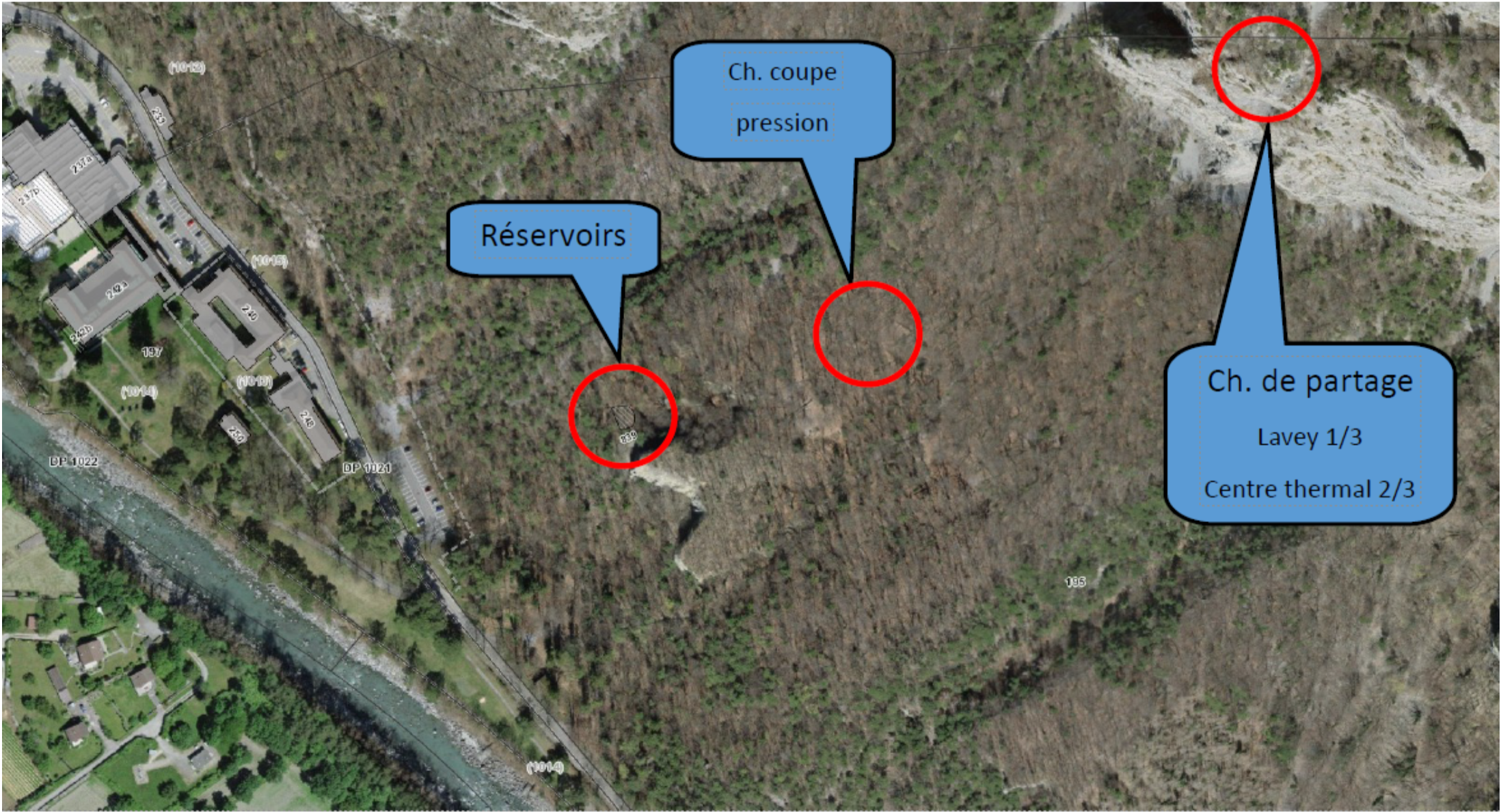Drinking water quality in 2023
Lavey thermal spring water comes from rainwater that fell almost 8,000 years ago.
From the rain to its resurgence as thermal water, the water undergoes a complex journey: it descends into the depths of the earth between geological layers, circulates between limestone and granite, reaches high temperatures and then rises to the surface along faults, loaded with all the minerals it has encountered on its long journey. Lavey water belongs to the sodium chloride sulphate class, and is particularly rich in sulphur, calcium, lithium, potassium and magnesium.
At a depth of 200 metres, water gushes out at a temperature of 62°C, at a rate of 420 litres per minute. A second well, located at a depth of 600 metres and in operation since 2000, supplies water at 67°C at a flow rate of 1,330 litres per minute. Les Bains de Lavey boasts the hottest thermal baths in Switzerland.
Les Bains de Lavey installation, distribution network.
Source
L’eau alimentant le réseau communal provient de la source de Morcles. En cas d’interruption ou besoin, la redondance est assurée via le réseau communal de la commune de Lavey
Lavey water – a source of energy
Un avantage non négligeable puisque l’ensemble du complexe thermal trouve ainsi, grâce à une ressource naturelle et non polluante, le moyen lui permettant de couvrir l’essentiel de ses besoins en énergie et chauffage.

Treatment
Les Bains de Lavey does not manage the spring water collection infrastructure. The networks from the sharing chamber (Commune de Lavey and Les Bains de Lavey), the decompression basin and the reservoirs are the responsibility of Les Bains de Lavey.
Before the water is distributed to the network, a UV irradiation unit treats the water.
Health checks
Monitoring of the quality of the drinking water distributed involves 4 samples per year taken by our technical department, which has been trained for this task.
Bacteriology
The maximum values for microbiological analyses have not been exceeded.

Analysis of 2 May 2023
| Germs sought | Results | Tolerance value | Unit | Standards Method |
|---|---|---|---|---|
| Total mesophilic aerobic germs | 7 | 300 | CFU/ml | ISO 6222* |
| Escherichia coli | 0 | 0 | CFU/100ml | ISO 9308-1* |
| Enterococcus spp | 0 | 0 | CFU/100ml | ISO 7899-2* |
Conclusion:
Water complies with the requirements of the DFI ordinance on drinking water and water for bathing and showering facilities open to the public (OPBD 817.022.11) for the criterion(s) analysed.
Physico-chemical parameters (from the complete analysis of the distribution network)
The maximum values for the physico-chemical parameters (including micropollutants) analysed were not exceeded.
Analysis of 2 May 2023
Total hardness: 12.42°f, i.e. soft water
| Parameters | Results | Compliance | Tolerance values | Unit |
|---|---|---|---|---|
| Turbidity | 0.38 | Compliant | 1.0 | NTU |
| Conductivity at 25 °C | 239 | Compliant | 800 | µS/cm |
| pH | 7.36 | Compliant | 6.8 – 8.2 | – |
| Alkalinity (Hydrogen carbonate) | 103.78 | NA | mg/l HCO3- | |
| Total hardness | 12.42 | NA | °TH (°f) | |
| Ammonium (NH4) | <0.015 | Compliant | 0.1 | mg/l |
| Nitrite | <0.01 | Compliant | 0.1 | mg NO2-/l |
| Orthophosphate | <0.05 | NA | mg/l | |
| Total Organic Carbon | <2 | Compliant | 2 | mg/l |
| Sodium (1) | 1.8 | Compliant | 200 | mg/l |
| Magnesium | 2.04 | NA | mg/l | |
| Potassium (1) | <1 | NA | mg/l | |
| Calcium | 40.09 | NA | mg/l | |
| Fluorides | 0.259 | Compliant | 1.5 | mg/l |
| Chloride | 0.88 | Compliant | 250 | mg/l |
| Bromide (1) | <0.05 | NA | mg/l | |
| Nitrate | 3.27 | Compliant | 40 | mg/l |
| Sulphate | 17.9 | Compliant | 250 | mg/l |
| Oxidizability | <0.5 | NA | mg KMNO4/l |
